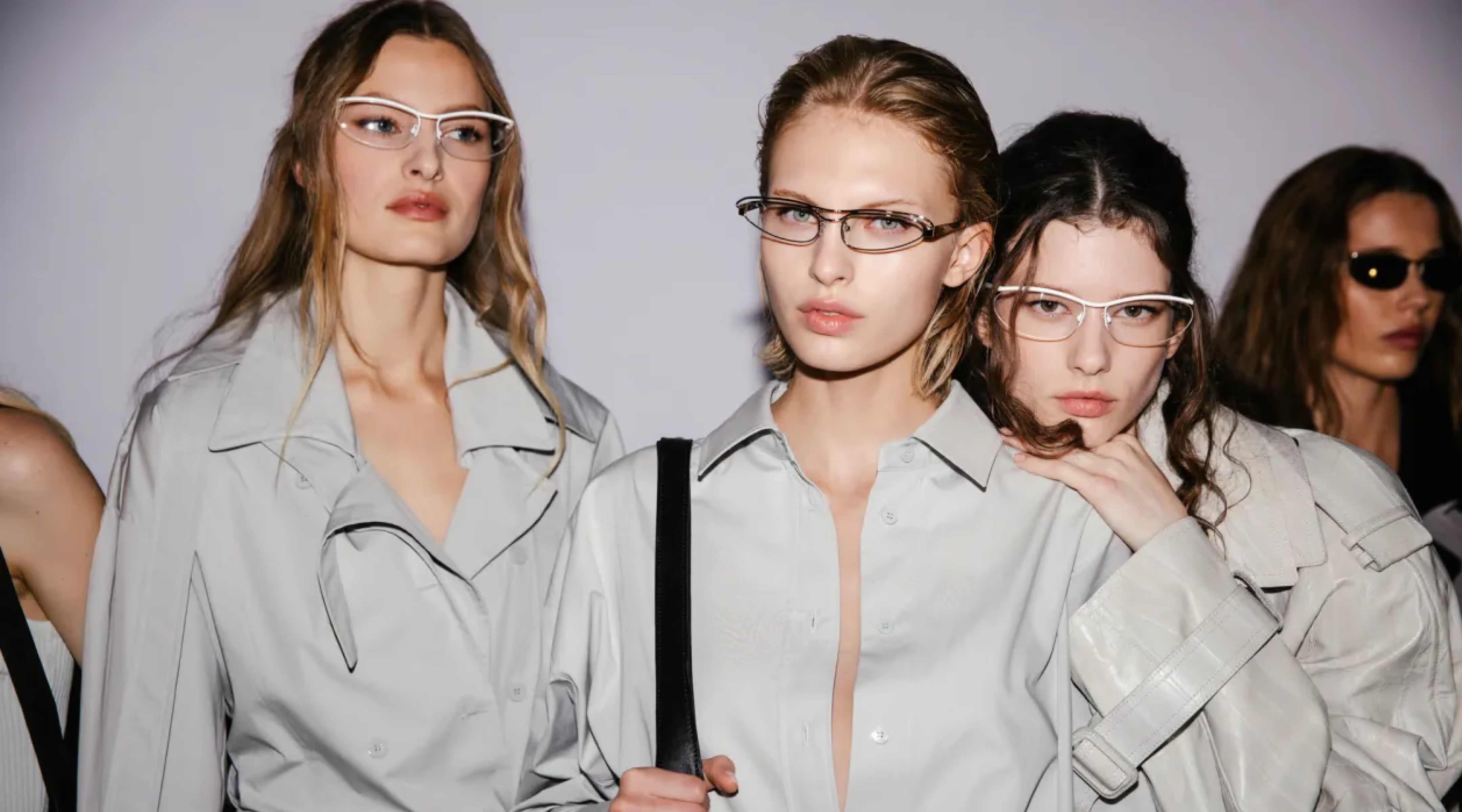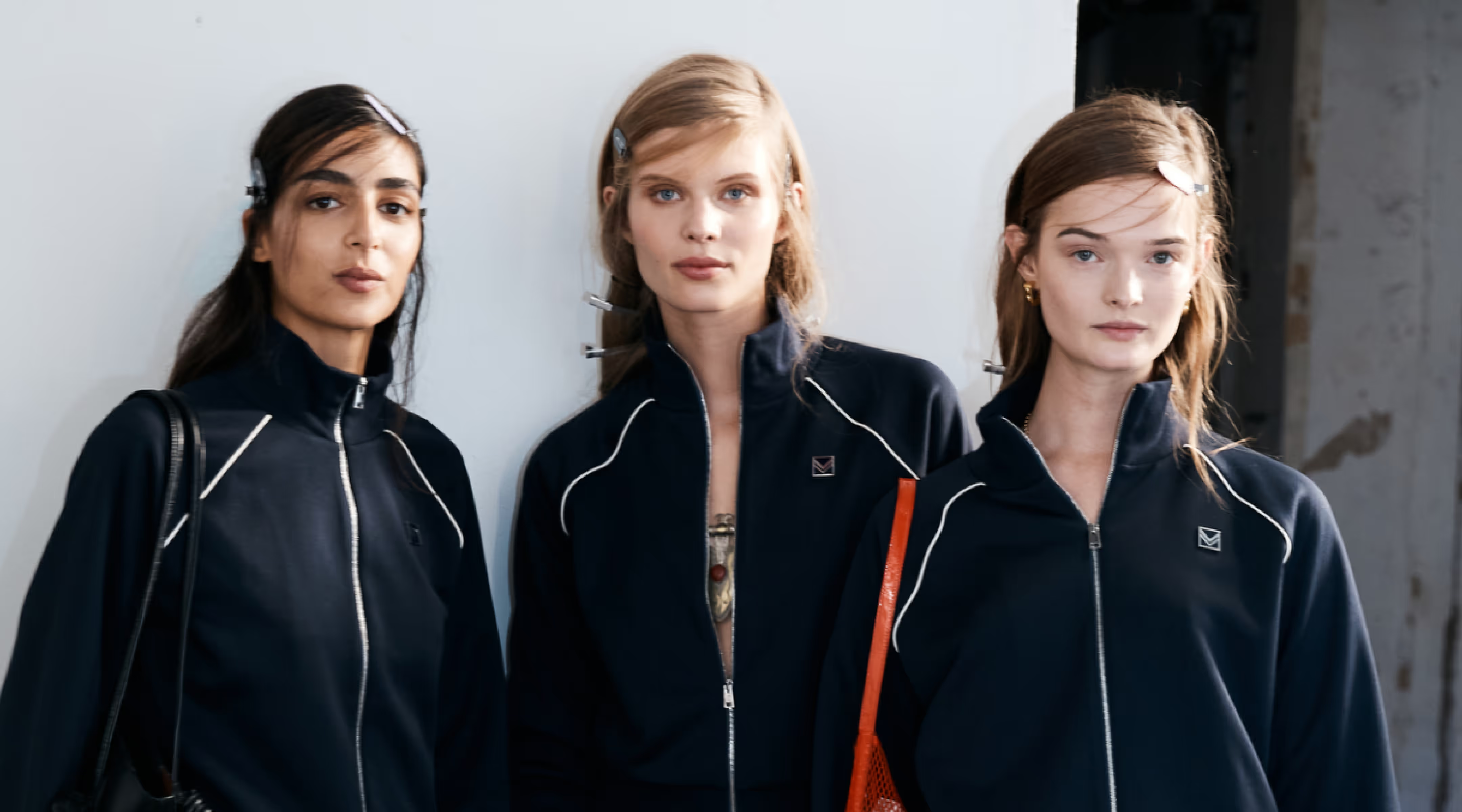
Paris Fashion Week exhaled its final breath with a Chanel renaissance courtesy of Matthieu Blazy. Now, the industry must push through the delirium and overwhelm of fashion’s most pivotal week and zero in on what exactly will matter come summer 2026.
The week at a glance
Chock-full of new ideas and renderings of what luxury really means in the modern age, Paris Fashion Week lived up to the hype of a season fixated on ‘newness’, with several knock-out shows and forward-thinking collections. However—between Jonathan Anderson’s Dior, Pierpaolo Piccioli’s Balenciaga, Glenn Martens’ Margiela, Loewe by Jack McCollough and Lazaro Hernandez, and Michael Rider’s Celine—social media fans, shoppers, and buyers alike must consider that soldering a new stamp on some of the world’s most recognizable brands is not a one-and-done task.
Fifteen designer debuts over the season won’t mean an instant change to the retail landscape, or revolutionary, never-before-seen wearables; creative directors need time to wear in the shoes of a heritage label until it feels like a second skin. Especially those required to lean on the codes of the past to design for the future, while turning profits around. Read: if you’re still waiting for a John Galliano, Alexander McQueen, or Martin Margiela awe-inspiring moment, it’s not going to happen how you think it will.
Although some ideas are already becoming clear. A certifiable ease and renewed ‘chic’ was something the larger houses centred on for instant relevancy. Think Nicole Kidman turning up to Chanel and Jennifer Lawrence dressed for Dior—two headlining actresses in oversized tailored shirts and straight-leg slouchy denim jeans, seated at their respective runways.
Celine also doubled down on aspirational cool. Michael Rider combined the best of Celine's predessors—Phoebe Philo-isms and Hedi Slimane-tics—for elevated daily outfitting that felt superbly French; it didn’t scream for attention, but will receive it regardless. As Rider said to the press, “Celine is not a place you’re going to come to find the most outrageous, most insane fashion and be the most fabulous person in the room. But hopefully you have the best coat on.”
Speaking of fabulous, Pierpaolo Piccioli was inspired by a single Cristobal Balenciaga couture silhouette for his SS26 debut - the sack dress. In 1957, the silhouette freed women from the classical constraining pieces of the New Look era, and now? How the collection’s structureless, elongated shapes looked so regal and modern comes down to Piccioli’s understanding of movement and feminine finesse.
So, if comfort, desirability, and wearability are the apparent keys to luxury’s kingdom… What about Saint Laurent? Who is going to wear the nylon 18th-century ball gowns and giant pussybows? It doesn’t really matter. As Anthony Vaccarello told reporters, he’s not about making clothes that everyone can wear. The repeated silhouettes, the minimal fabrications, the front row curation, and the overall velvet-rope air of YSL genuinely fosters an exclusivity and demand that filters down to its more attainable shoes and bags—the tangible pieces of its world that many desire to populate. That’s luxury.
Runway highlights
There was something about skirts in Paris this season. While it’s hard to call the pencil skirt a trend, being ever-present in corporate settings, the neatness of the knee-skimming length of the pencil skirt came off as fresh and endlessly versatile within each brand context. Whether it was slightly more sinister and provocative at McQueen, all-leather at Hermès, or low-rise and commute-ready at Chanel, it’s evident that the mid-length skirt has replaced the micro-mini of a few seasons ago.
Elsewhere, be it masculine-leaning and overtly feminine, corporate tailoring remains key to the 2026 wardrobe. Sharply cut blazers made themselves at home at Dries Van Noten, Givenchy, Stella McCartney, and Celine, the Bar jacket made its well-received return at Dior, while curve-accentuating silhouettes continued to make themselves known, particularly at Miguel Castro Freitas’s Mugler debut, Loewe, Schiaparelli, and Haider Ackermann’s Tom Ford. Matthieu Blazy lined boxy jackets with Chanel’s signature chainlink to allow them to hang perfectly off the body.
Additionally, the runways saw skinny belts tightly wrapped around blazers and low-rise pants, straight-leg and boot-cut denim, and plenty of leather pieces. Fringing furthered its stronghold, namely at Alaia, Isabel Marant, Chanel, and Gabriela Hearst.
The one thing that wasn’t steeped in the everyday lives of working, studying, partying, and mothering women? The shrinking size of the runway models, with what appeared to be next-to-no size inclusivity across a staggering number of shows.
The trends
Wardrobe neutralizers, regency references, and the skirts that won’t quit. Here are Paris Fashion Week’s top runway trends for SS26.
Radical simplicity
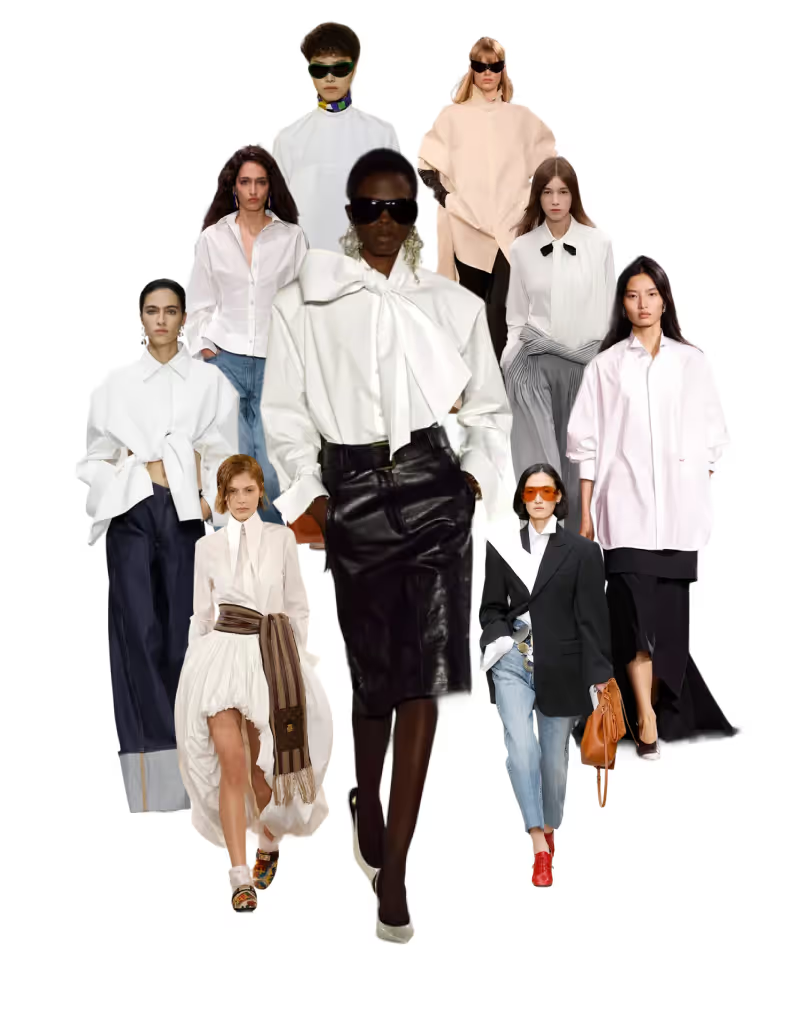
Luxury fashion thinks a crisp white shirt can do no wrong, with the total palette cleanser a clear part of the SS26 starter pack - best with simple denim, or statement skirts. The oversized borrow-from-the-boys shirt posed its historical significance at Chanel — who, in fact, did steal her lover Boy Capel’s shirts — made in collaboration with shirt maker Charvet. Givenchy’s shirts were sculpturally tailored to reveal the chest or dip at the back of the neck, while Balenciaga took the dinner shirt to new lengths (literally).
Cinematic skirts
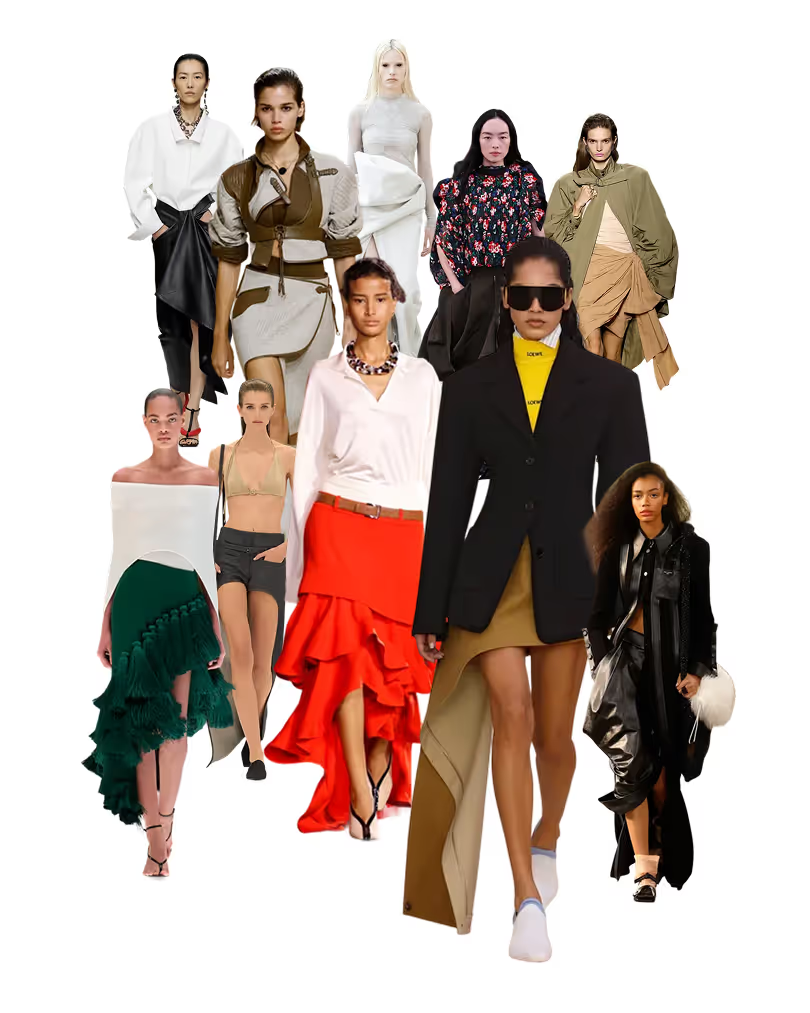
Skirts have been exploding off the Paris runways, with asymmetrical, pouffy, and tiered styles the must-haves of the summer wardrobe. Alaia showed draped, pleated, fringed, and tasseled skirts in jewel colours paired with body-hugging tops, while Loewe’s hems cascaded from beneath jackets and blazers. Chloé went with “draping and pleating and wrapping and knotting, to make dresses and skirts that feel more airy and spontaneous for the girls today.”
Oh baby!
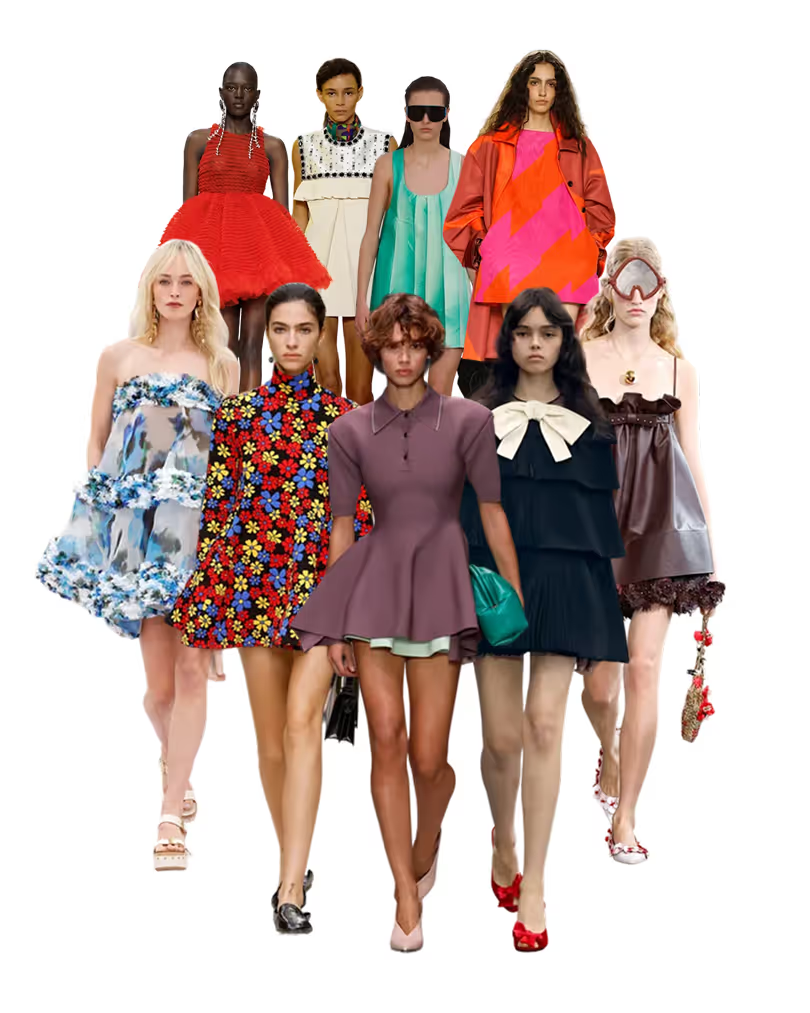
The babydoll silhouette emerged at a number of major houses, a symbol of rebellion against more conservative cocooning, maybe? Celine’s show began with three micro, full-skirt dresses, one in black tweed, two in ’60s daisy prints, with matching underwear. Miu Miu’s homemaker aprons turned into bejewelled numbers for after dark, and Loewe’s sculpted leather dresses created bell shapes or fanned out from the waist.
Vintage pink
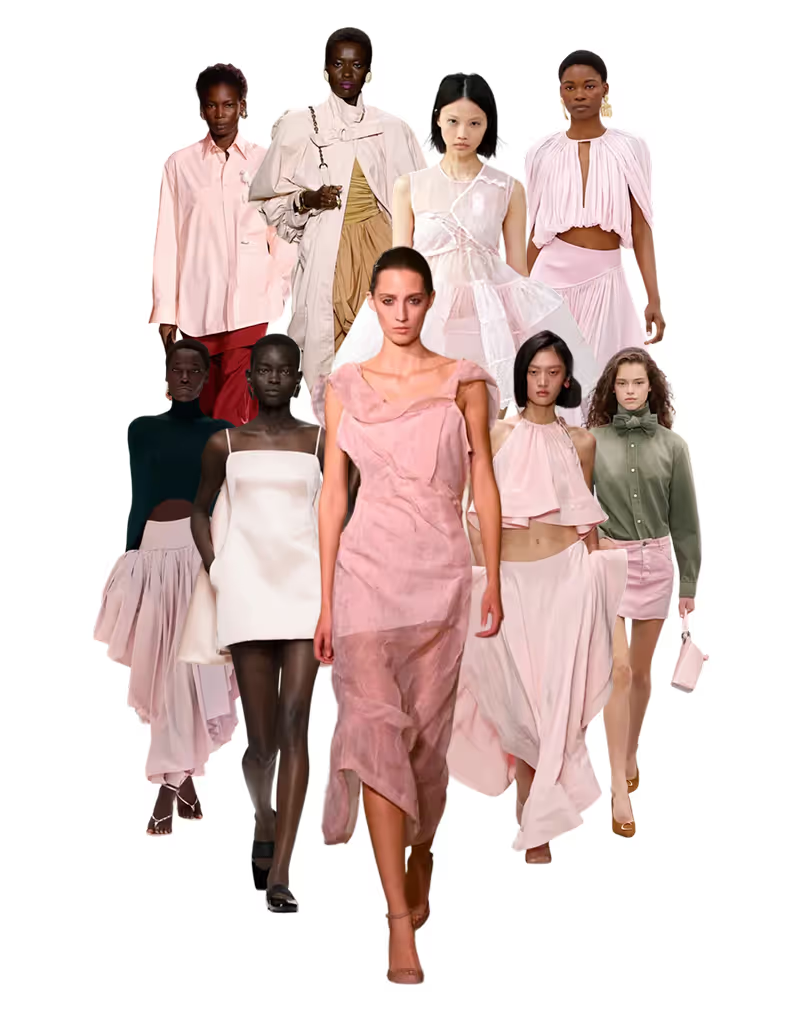
Pale pinks continue to crop up in the designer collections, a subtle switch up from neutrals and whites. The vintage, aged nature of these delicate hues was enough to remove them from any particularly girly connotations, where Alaia, Louis Vuitton, and Victoria Beckham all leaned into the light shade, whether for easy daily wearing or elegant evening wear.
Revolution ready
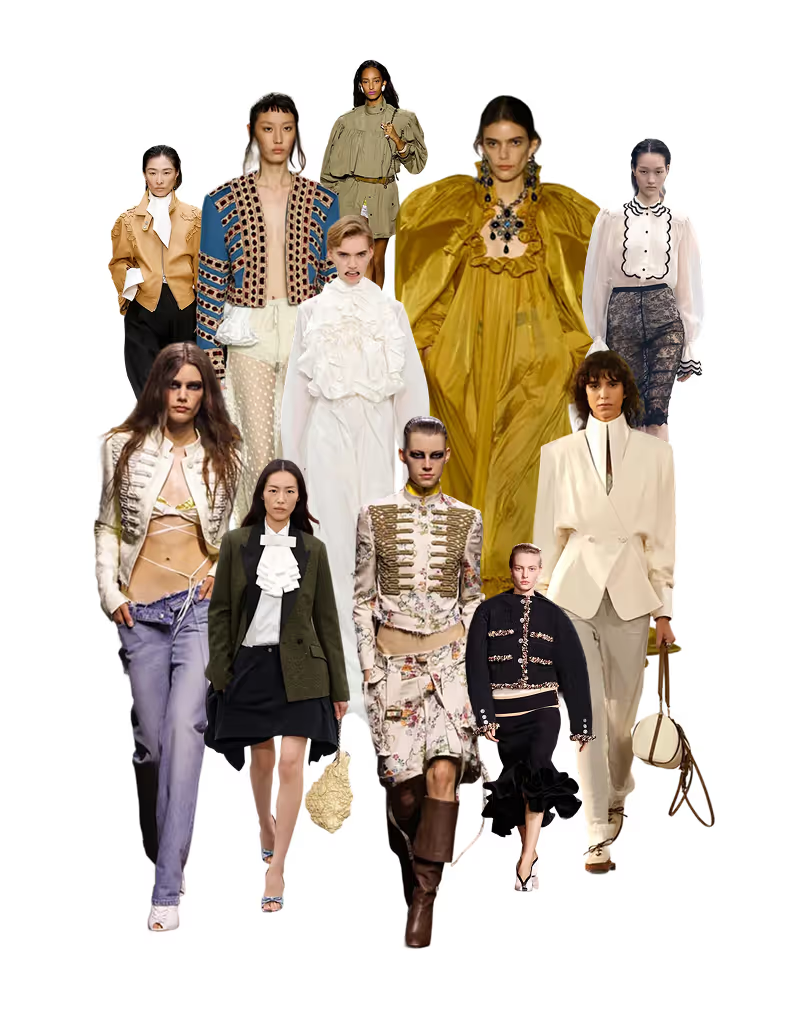
From the dracu-collars of last season, to the corsets, panniers, and hoop dresses we’ve come to know on the recent runways, fashion appears to be taking a Napoleon-inspired stance on utility wear. Take the militant regency stylings of the key jackets and design features at McQueen by Sean McGirr, as well as Ann Demeulemeester; epaulettes, frogged buttons, and square shoulders. The military jacket was similarly referred to in Julian Klausner’s Dries Van Noten show, where the vivid colours echoed the Beatles’ Sgt. Pepper era. 18th-century ball gown silhouettes were show-stoppers at Saint Laurent, while Jonathan Anderson matched his ruffle collar tropes from Dior menswear with the womenswear collection.
Planning your next assortment? Catch up on FW25's top trends from New York, London, Milan and Paris.
Image credit: WWD, Tagwalk


